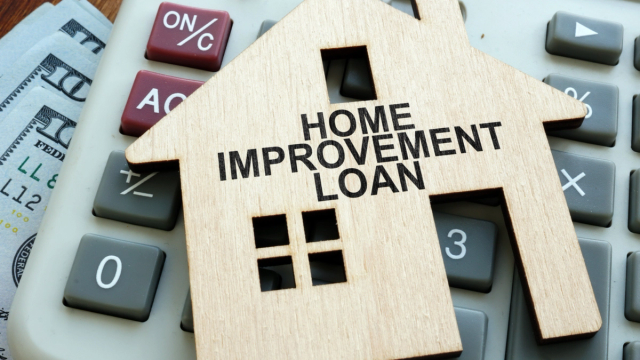Risk-Based Lending: What Is It, and How Does It Help?
Risk-based pricing can bring peace of mind to both you and your customers. More of your homeowners will be approved for financing, and you'll get more projects.

Risk-based lending is a term you may hear when you offer financing to your customers. You may also hear it referred to as risk-based pricing or risk-based underwriting. What is it exactly?
Many lenders will use an applicant’s credit score to determine if they qualify for financing. If their credit score falls within the prime to super-prime range, they’ll be approved for a low interest rate. If it falls below that range, their application will be denied. Because this process is based primarily on that credit score, that leaves a lot of people ineligible for financing.
Risk-based lending goes a step further than the typical lending process by looking at someone’s entire credit profile. This can include factors beyond their credit score, such as employment status and income (but not demographic factors, like race, gender, or age). Based on the profile, lenders decide to approve or deny an application, then determine what interest rate they’re willing to offer.
This is where the term risk-based comes in: interest rates are based on the risk the borrower will default on the loan. Homeowners with higher-risk credit profiles will likely get a higher interest rate than average and could be offered an option such as HVAC leasing. But, if your financing partner works with higher-risk profiles, your homeowner’s more likely to get financing than an automatic denial.
How Does Risk-Based Lending Help Your Customers?
Consider this: 40% of American adults have a near prime credit score or lower. How do they pay for your services if your financing partner denies their application?
Well, they may not be able to. 57% of American adults can’t afford an unexpected $1,000 expense. And as you know, HVAC repair and replacement is often unexpected. They may have to shop around to find a cheaper contractor or one that can help them with financing.
You may not have control over denials, but customers will still associate this experience with your business. And this negative experience could affect your bottom line. Customers will share a negative experience with 3 to 5 times more people than a good experience and are more likely to leave a negative review. So not only could you lose this project, but you could lose future projects, too.
Your customers have a better chance of approval if you partner with a company that accommodates higher-risk credit profiles. Statistically, you’ll get more approvals, and fewer homeowners will need to shop around. This can improve customer experience, reducing the chance of a negative review.
This also gives you more opportunities to offer premium options. Monthly payments make upgrades much more affordable for your homeowners. If they qualify for a 36-month loan, that $500 upgrade becomes an extra $14 per month. It’s a lot easier to say yes to $14 than $500. So, all things considered, risk-based lending will help you increase your sales by giving homeowners more options.
What Else Should Contractors Consider?
Risk-based lending seems like a great deal for everyone: more homeowners get loans, and you get more projects. So, what’s the catch?
There’s not necessarily a catch, per se, but you should keep a few things in mind. As we mentioned, your homeowners with lower credit scores will see higher interest rates. They’re likely aware this will happen. But it doesn’t hurt to prepare for frustrated customers.
You can soften the conversation by painting the whole picture for them. For example, FTL Finance offers competitive interest rates, and we don’t charge any prepayment penalties. Your homeowner can save money on interest in the long run by paying their loan off early. However, other lenders may charge a prepayment penalty. Familiarize yourself with your lender’s policies so you can answer questions and paint the picture accurately.
You, as the contractor, could have higher rates, too. Higher-risk loans can come with a contractor fee, but this varies by lender. At FTL, we offer one risk-based program with no contractor fee. Programs with a fee are optional but may provide better interest rates for your homeowners.
The good news is you won’t be taking on extra risk with risk-based pricing. In fact, you’re taking less of a risk than accepting payment yourself. With financing, you’ll get paid when the project is done. If the homeowner defaults on their loans, it’s the financing company’s problem, not yours. But if you handle the payment yourself, you risk a customer not paying.
What Next?
While many financing companies offer risk-based pricing, not all of them will approve higher-risk credit profiles. Even with higher interest rates and contractor fees, the risk just isn’t worth it. But for you, it is.
Consider partnering with a financing company that accommodates higher-risk profiles, like FTL Finance. We partner with other financing companies as well, so if we can’t approve your homeowner, we’ll do our best to pair them with a company that can. Check out our approval programs to learn more.
 Financing EssentialsHome Improvement Loan Types: A Simple Overview for HVAC Contractors
Financing EssentialsHome Improvement Loan Types: A Simple Overview for HVAC Contractors Financing EssentialsSecond-Look Financing: How Does It Benefit Your Home Improvement Business?
Financing EssentialsSecond-Look Financing: How Does It Benefit Your Home Improvement Business? Sales Strategy, Financing Essentials3 HVAC Mistakes That Are Costing You Money
Sales Strategy, Financing Essentials3 HVAC Mistakes That Are Costing You Money